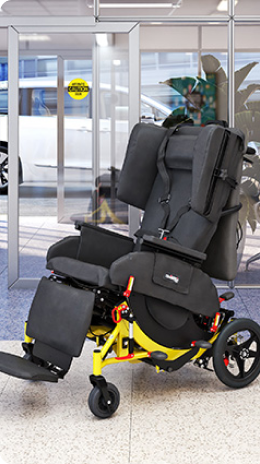Getting the Perfect Fit
When it comes to wheelchairs, shower commodes, and gliders, getting a perfect fit is a top priority. Use these fitting tools to help you measure and order the correct size.
Anatomical Assessment Tool
A clinician or durable medical equipment specialist should perform a seating assessment to understand your specific seating and positioning needs. The anatomical assessment forms, also known as the fitting tools, often serve as proof of the user’s medical necessity. In order for insurance companies or government funding agencies to process a claim, you will need an anatomical assessment.
The anatomical assessment fitting tool will guide you or your provider through the various wheelchair measurements. You will measure the user at a variety of points. First, you’ll measure the shoulders. Second, measure the length of the back. Third, measure the seat dimensions and the width across the knees. Finally, measure the arm support length.
Take the following measurements:
- Shoulder Width — Measure the patient at the widest point of the shoulders.
- Back Height — Measure from the seating surface to the top of the head.
- Back Length — Measure from the seating surface to the base of the neck.
- Seat Width — While sitting on a firm surface, measure the width of the hips/thighs at the widest point. Add 1”-2” to this measurement for a comfortable seat width.
- Width at knee — Measure across the widest point of the knees.
- Seat Depth — Measure from the posterior (back) of the buttocks to the popliteal (underside of the knee).
- Seat Height — If the patient utilizes a cushion when in the chair, complete measurements with the cushion in the chair to obtain proper measurements. With feet flat on the floor & knees bent at 90°, measure from the floor to the underside of the knee and add 1”- 2” inches to allow for clearance of the footrest.
- Armrest Length — With the shoulder in a neutral position, measure from the 90-degree angle at the elbow to the fingertips.
The assessment also includes questions about the user’s environment (e.g., doorway widths, flooring types, etc.). Additionally, it considers their posture, skin integrity, and strength, coordination, and motor function.
Printable Assessment Forms & Fitting Tools:
Download the printable Anatomical Assessment
Download the printable Bariatric Anatomical Assessment
NRRTS Wheeled Mobility & Seating Evaluation:
The National Registry of Rehabilitation Technology Suppliers has created a thorough evaluation form that can also be used in addition to the Broda forms above.
Case Evaluation Form
Often, a person wanting to purchase a Broda wheelchair will complete a trial period where they see how the equipment will function in their environment. The case evaluation form is used to document the results of such a trial period. Trials are useful to show the insurance provider that the equipment will produce the desired results and demonstrates that it is worth the investment.
Download the Case Evaluation Form
Need More Support with Fitting Tools?
The Broda team is here to help. You can reach our Customer Service team by calling 1-844-552-7632 or by emailing customerservice@brodaseating.com.
